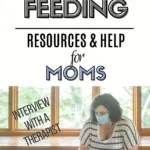If you suspect that tongue tie might be causing your issues with nursing, then you need to read this article by Kelly O’Brien Pahman, the founder of the Craniosacral Center of Grand Rapids. Below Kelly addresses the symptoms of tongue tie and provides resources for how to get help for tongue tie, so you have a much more pleasant breastfeeding journey and your baby can get nutrition they need.
You imagined breastfeeding would be this blissful, easy cuddlefest, right? Feeling your most feminine earth-mother vibes, snuggling with a soft, happy newborn, you’d crush this new job, and it would be just the beginning of your amazing mom life.
Now, maybe that’s happened to you. But I’m here to tell you that if your baby is a red, screaming ball of anger, if you are in toe-curling pain, if you’re nursing all the time and still your baby doesn’t seem to be gaining weight – I see you.
And you’re not failing!
In my time as a doula, a craniosacral therapist and mom of four, I’ve come to discover that many, many women are struggling through breastfeeding, and even sometimes give up, because their baby has a tongue tie.
RELATED ARTICLE: 30+ Breastfeeding Tips
Why a tongue tie is often missed by doctors and midwives
What is a tongue tie, you ask? A tongue tie, also referred to as ankyloglossia, is when the frenulum (the small piece of connective tissue under your tongue) is tight or short, restricting the tongue’s movements. When the tongue doesn’t move like it should, getting a good latch while breastfeeding is almost impossible, leading to pain, baby not getting enough to eat and colicky fussiness. Unfortunately, most doctors, nurses and even midwives do not have the proper training to identify a tongue tie, leading them to shrug their shoulders when one of their patients is struggling with breastfeeding.
Without targeted intervention by a team of caregivers who are trained in identifying and treating tongue tie, many of these women will be forced to give up breastfeeding.
But it doesn’t have to be that way.
Many of my clients whose baby had a tongue tie have gone on to have a joy-filled, connected breastfeeding relationship that stretched into the toddler years. I love helping these families overcome tongue tie, help their baby feel more comfortable in their own bodies and get the help they need.
Symptoms of a tongue tie
A tongue tie can present in many different ways. While your first thought may be to try and look under your child’s tongue (not easy to do!), identifying a tongue tie visually isn’t always that easy.
These signs and symptoms, however, often let us know that the tongue isn’t functioning before we even peer inside.
- Slow weight gain
- Poor or shallow latch
- Clicking sound while nursing
- Gassiness
- Grunting
- Reflux, Colic or general fussiness
- Pops of breast frequently or seems to gag
- Cracked, sore nipples for mom or painful nursing
- Creased, flat or blanched nipples after nursing
- Low milk supply, or alternatively, engorgement
- Plugged ducts or mastitis
- Waking frequently to eat
Not every mom and baby will experience all of these symptoms, but tongue tie won’t get better on its own, so if you suspect a tongue tie, seek help from trained professionals.
RELATED ARTICLE: Tips for Using the Haakaa Breast Pump
Help for a tongue tie: a holistic approach
The term “tongue tie” suggests that the main thing you need to fix is the tongue, and while that’s most often the start of how to treat tongue tie, it’s not the whole picture.
In fact, many families who get the tongue tie “revised” – clipped by a medical professional with a laser – don’t experience relief from the symptoms if they don’t seek further help. That’s because a tongue tied baby has more going on than just an overly restricted tongue.
Your baby’s tongue tie is just the tip of the iceberg – a sign that there is tension and restrictions throughout the body, from the tip of the tongue into the neck and shoulders and all the way through to the tailbone.
This tight midline tissue can run the length of the body, not just in the tongue, creating an overly tight midline from head to toe. You’ll often see tongue tie babies curled up in a c-shape with their head, arms and legs reaching over to one side. Others will have their arms above their head and their backs constantly arched. Some have shoulders pulled back together. Torticollis, a consistent head tilt that can lead to a flat spot on the baby’s developing skull, is also common in tongue tie babies. All of these twists and turns are just baby’s attempts to get comfortable, eat and digest their food.
In order for a tongue tie to really be addressed, we have to work on releasing this tension, not just in the tongue, but in the whole body.
After years of working with families who are dealing with a tongue tie, I have developed a holistic approach to the issue – working with multiple care providers to create a team that supports mom and baby. And now, I’m able to share that knowledge with families around the world, through my new online tongue tie courses.

How to get help for a tongue tie
There’s so much to know when it comes to dealing with and addressing a tongue tie that my new clients often feel overwhelmed. So, I created an online course for families navigating Tongue Tie – it’s called the Tongue Tie Toolkit, a series of videos and articles that help explain what’s going on in your baby’s body and how we can work through it together.
the course includes seven expert interviews with pediatric dentists, speech language pathologists, occupational therapists and lactation consultants. It’s truly a life-changing course, and I’m so excited to share it with you! I created a code for the Mom Friend readers to get $75 off: Use code MomFriend at checkout.

If you’re just at the beginning of identifying a tongue tie, you might want to try my free intro course – Tongue Tie 101. This shorter course can help you better understand what you might be up against and what the road to recovery looks like. I highly recommend it!
You can persevere through a tongue tie! I’ve helped families through it and seen them meet and exceed their breastfeeding goals. The joy and peace families have when a baby goes from constantly crying to calm and happy is life-changing. If you’re struggling right now, I hope you will get the help you and your baby deserve.
For more details on tongue tie, I highly recommend this blog post on my website, How Craniosacral Therapy Can Help Your Tongue Tied Baby, and for more on treating tongue tie, visit my Holistic Help for Tongue Tie page.

